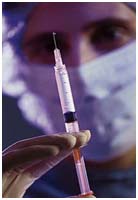This article; Lactic acid and running: myths, legends and reality by Doctor Andrew Bosch
Most runners still believe that lactic acid is released during hard or unaccustomed exercise and that this is what limits running performance, as well as being the cause of stiffness. Neither is correct. But not even is the terminology of “lactic acid”.
Lactic acid does not exist as an acid in the body: it exists in another form called “lactate”, and it is this that is actually measured in the blood when “lactic acid” concentration is determined, as is done from time to time. This distinction is important not only for the sake of correctness, but more importantly, because lactate and lactic acid would have different physiological effects.
The greatest myth is that lactic acid is the cause of the stiffness felt after an event such as a marathon. Stiffness is due mostly to damage to the muscle, and not an accumulation of lactic acid or lactic acid crystals in the muscle.
Another misconception is that lactate is responsible for acidifying the blood, thereby causing fatigue.
To the contrary, lactate is actually an important fuel that is used by the muscles during prolonged exercise. Lactate released from the muscle is converted in the liver to glucose, which is then used as an energy source. So rather than cause fatigue, it actually helps to delay a possible lowering of blood glucose concentration, a condition called hypoglycemia, and which will cause a runner to feel weak and fatigued if it occurs.
A more recent addition to the muddled thinking is that of the anaerobic threshold. Pictures are seen of athletes having a blood sample taken with an accompanying caption indicating that the workout is being monitored by measuring “lactic acid”. The supposed rationale is that as running speed is increased, a point is reached at which there is insufficient oxygen available to the muscle and energy sources that do not require oxygen contribute to the energy that is needed. This results in a disproportionate increase in the blood lactate concentration, a point identified as the anaerobic threshold. This is also known as the lactate threshold or lactate ‘turnpoint’. There are two problems with this.
Firstly, the muscle never becomes anaerobic: there are other reasons for the supposed disproportionate increase that is measured in blood lactate concentration. Secondly, the so-called disproportionate increase causing a ‘turnpoint’ is not correct, in that the increase is actually smooth and incremental. This led to another way of using blood lactate concentration to monitor running performance.
If blood lactate concentration is measured at different, increasing running speeds, it is possible to eventually draw a curve depicting the continued increase in concentration as the running speed gets faster. The position of this curve changes as fitness level changes. Particularly, the fitter a runner gets, the more the curve shifts to the right, meaning that at any given lactate concentration the running speed is higher than before. Often, the running speed at a lactate concentration of 4 mmol/l is used as a standard for comparison. This can also be used as a guide for training speed i.e. a runner could do some runs each week at the speed corresponding to the 4 mmol/l lactate concentration, some runs above this speed, and recovery runs at a slower speed.
Of course, as fitness changes and the curve shifts, these speeds will change, and so a new curve will have to be determined.
This is all very well, but the problem is to know how much running should be done below, at, and above the 4 mmol/l concentration. Remember, 4 mmol/l is a fairly arbitrarily chosen amount. Thus the real value in determining a “lactate curve” is to monitor how it shifts with training. The desirable shift is one in which a faster running speed is achieved at a given lactate concentration than before. This regular testing can be done in the laboratory with the athlete running on a treadmill or on a track in which running speed can be carefully controlled, such as by means of pace lights. Both types of testing are done at the Sports Science Institute, usually for research purposes.
While useful information can be gained from regular testing to determine a runners’ lactate curve, it is important to keep in mind what is fact and what is fiction.
View the articles:

































Trackbacks/Pingbacks